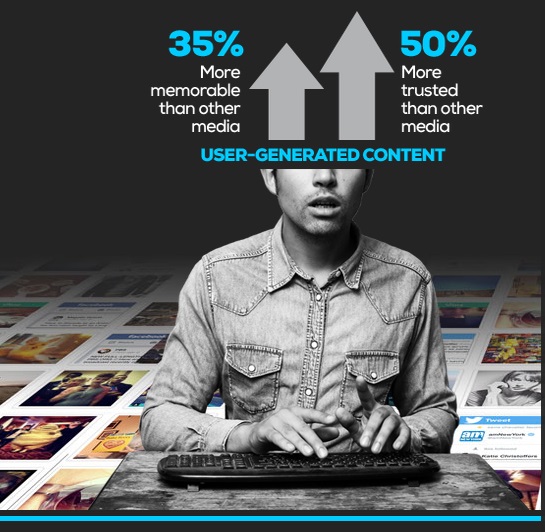Peer-created content (comments, reviews, ratings, tweets etc.) often sparks and generates discussions over products, brands, events and the like. User-generated content that comes from trusted peers or customers often encourage or discourage interest over a product or brand, making it a very important and relevant form of advertising via mobile and online.
The quantity of user-generated content is ever increasing and distribution of content often occurs via second screen applications where people can comment, tweet and interact with each other to acquire more information.
The reason second screen apps are called “social” and “participation” applications is that their value resides within a social context where content is publicly made available by consumers. Ultimately, all this content becomes a relevant tool for companies who can use it to understand interests, trends, the needs and wants of the modern day digital consumers. This content is various (chats, blogs, personal videos, images etc.) but product recommendations and ratings are one of the most relevant forms of second screen user-generated content that influence purchase intent.

Source: Crowdtap
One of the most important and relevant challenges for brands is to gain the trust of customers. Established brands want to maintain that trust while emerging companies seek to attain it. Product recommendations and product ratings displayed within second screen apps make it easier for peers to decide on buying a product, to weigh the qualities of a good from a viewpoint that is not linked to the company etc.
There are also second screen applications that allow users to connect and interact through the internet in real time about a specific event or around a specific topic that is experienced together and is of mutual interest. The user does not waste as much time trying to find relevant peer-created content and is instead provided with a system that integrates this information. One such example is socializing around media or SAM, a system that uses second screen technology to connect mobile phones, products and a database of recommendations, among others.